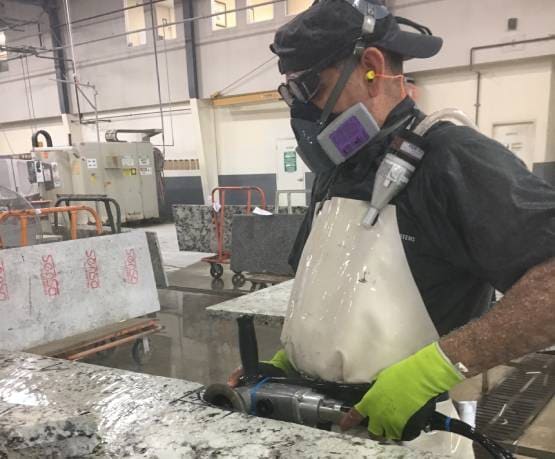Silica

Photo by NIOSH
Millions of U.S. workers are exposed to respirable crystalline silica (RCS) in a variety of industries.
Silica dust is made up of small particles that can become airborne during work activities with materials that contain silica. Particles that are small enough to be inhaled deep into the lungs are called respirable.
Crystalline silica is typically found in:
- Soil
- Sand
- Concrete
- Mortar
- Granite and other minerals
- Artificial stone
The most common form of crystalline silica is quartz. However, it can also occur in the form of cristobalite and tridymite. Exposure to cristobalite typically occurs in foundries where intense heat of molten metal causes cristobalite to form in clay molds. Hazardous levels of respirable dust can be released into the air when working with materials that contain silica.
Silicosis, an irreversible but preventable lung disease, is caused by inhalation of RCS. Work exposures to RCS also cause other serious diseases, including lung cancer.
Exposures can occur during the following activities:
- Manufacturing of glass, pottery, ceramics, bricks, concrete, and artificial stone
- Abrasive blasting
- Foundry work
- Hydraulic fracturing
- Stonecutting
- Rock drilling
- Quarry work
- Tunneling
There are various industries where workers can have jobs at risk for RCS exposure. Examples include:
- Construction
- Mining
- Oil and gas extraction
- Stone countertop
- Foundries and other manufacturing settings
- Dentistry
